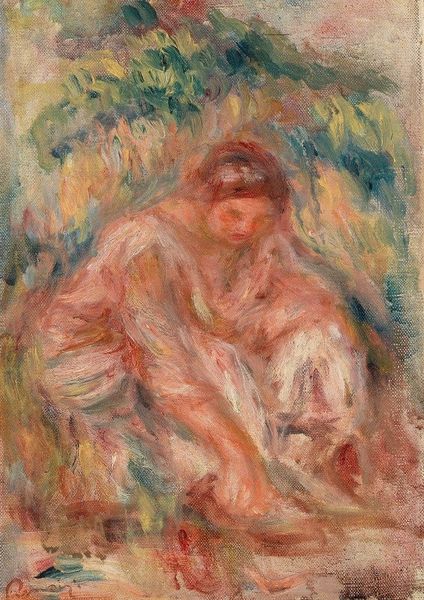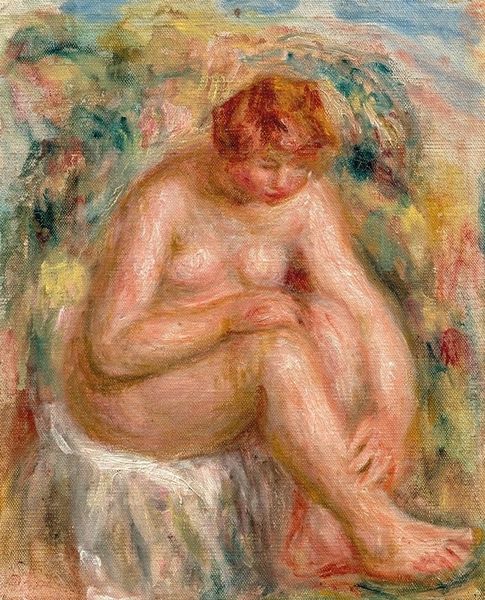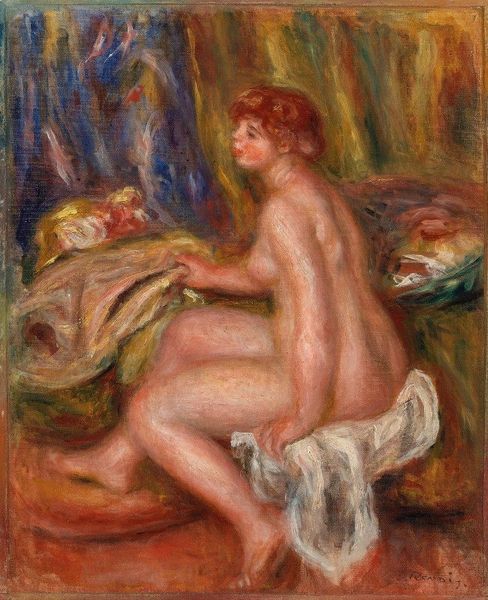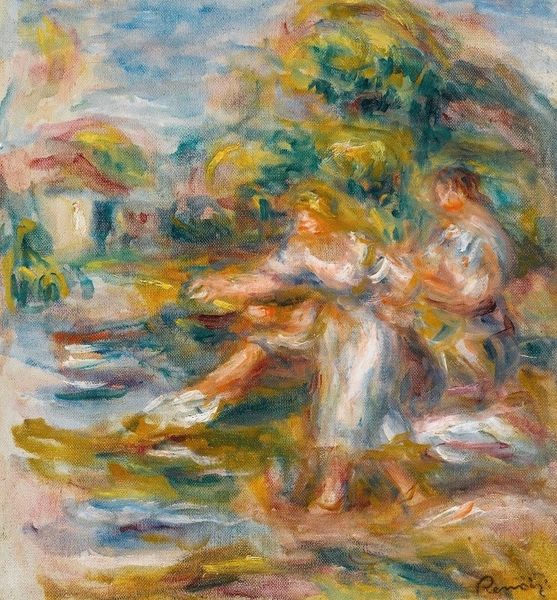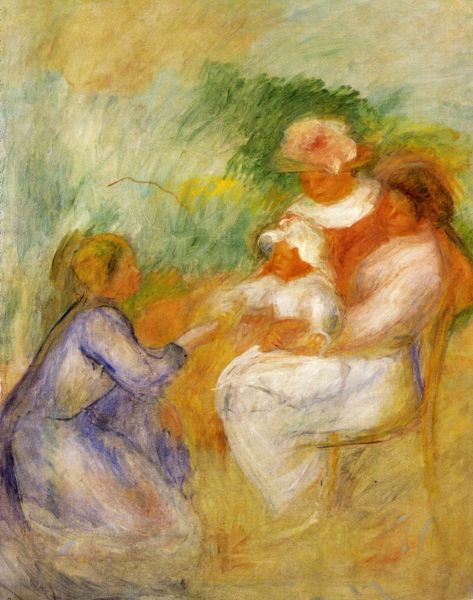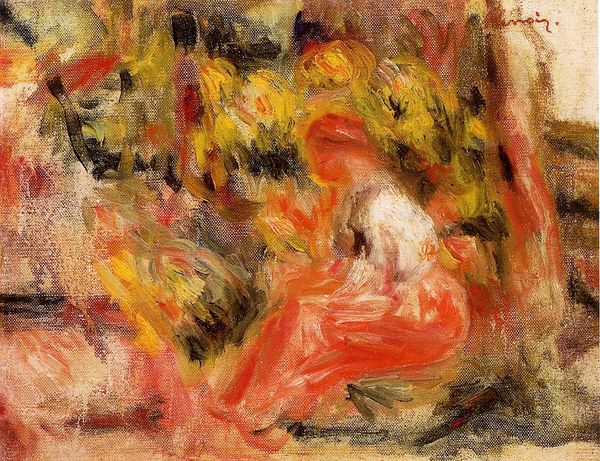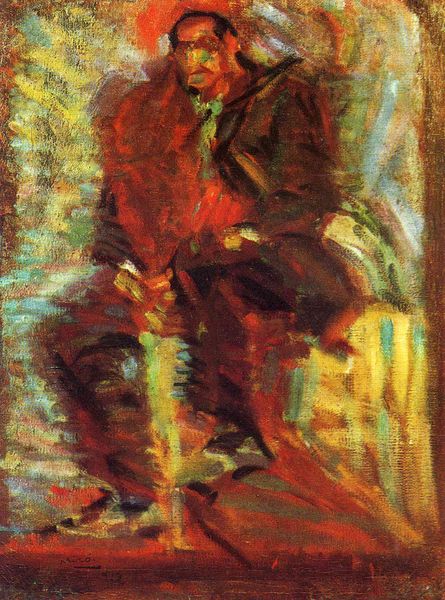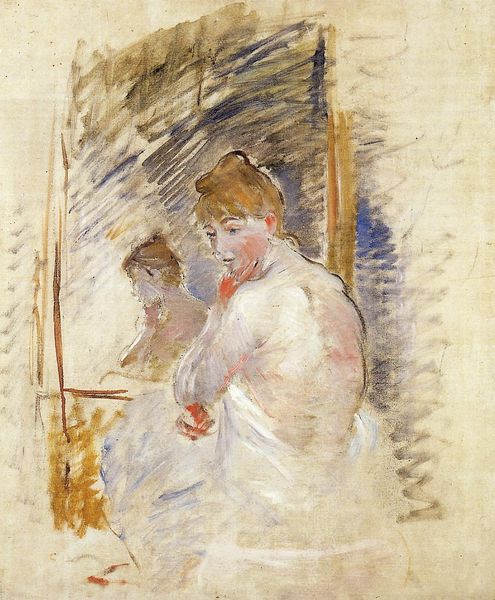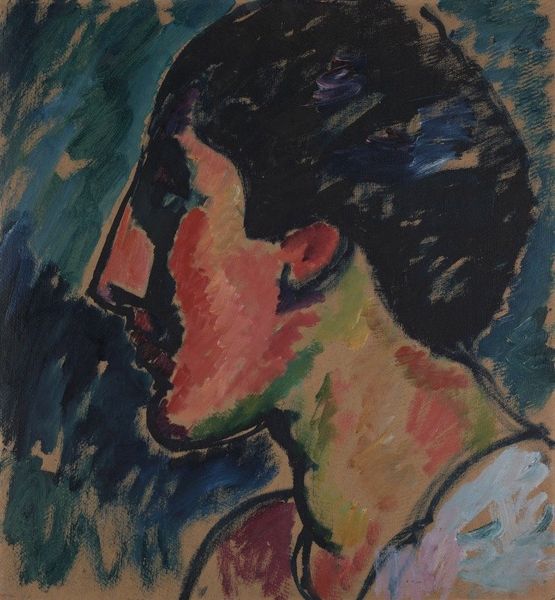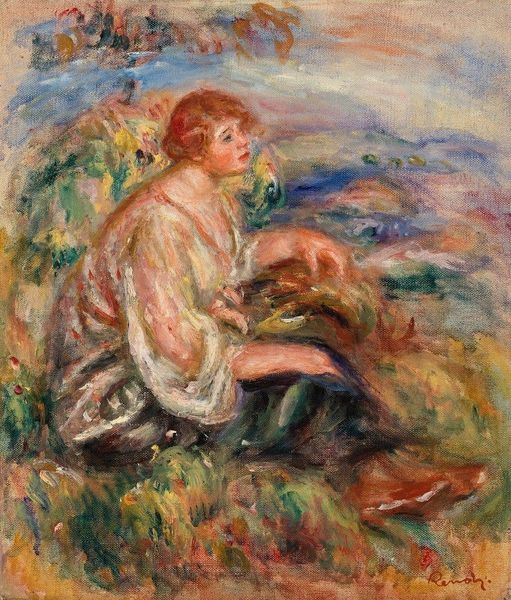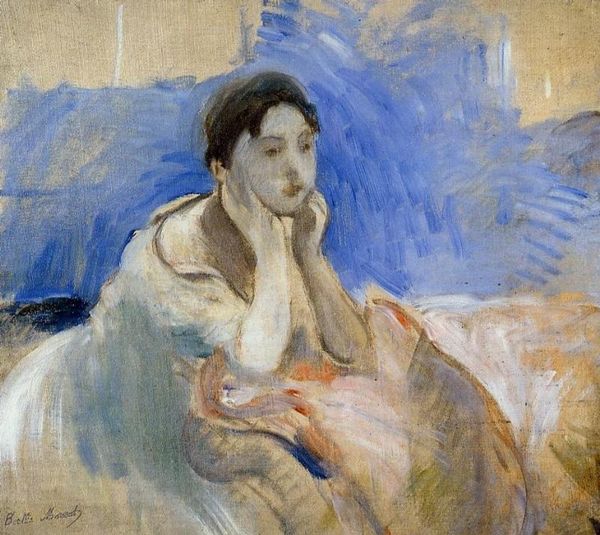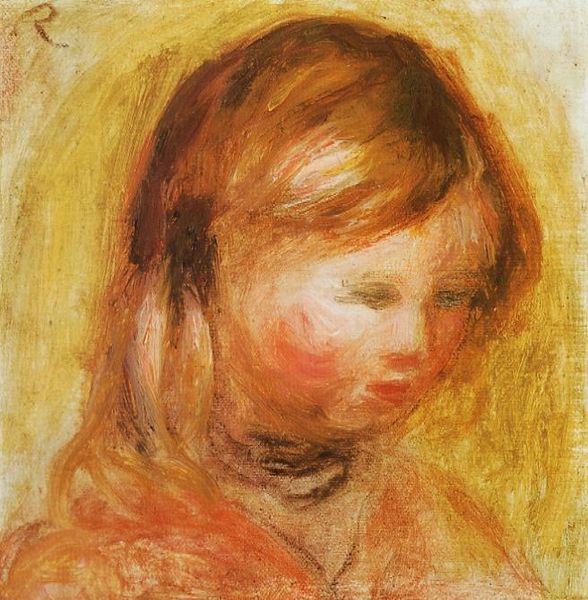
Dimensions: 52 x 52.4 cm
Copyright: Public domain
Curator: This is "Claude Renoir Potting," an oil on canvas painted by Pierre-Auguste Renoir in 1916. Editor: My first impression is one of serene domesticity. The light is soft, the palette muted... It feels like a very intimate glimpse. Curator: Absolutely. Note the careful brushwork, how Renoir uses small strokes to build up form, especially in the figure's face and hands. The composition is focused on the subject and very little background to offer other influences on the viewer's interpretations. Editor: It makes me wonder, though, about the context. Late Renoir… his hands were already crippled by arthritis. How did that impact not just his technique but also his subject matter? This isn't a society portrait, it’s a genre-painting: Claude’s indoor work seems representative of labor within the home. Curator: The physical limitations undoubtedly influenced his later style, making it more fluid. His late focus was, I argue, about capturing the fleeting, the sensual through simplified forms. There's a warmth and palpable connection in the tones used in his flesh which, I feel, demonstrates this aim effectively. Editor: I'm also interested in what's not shown. Why potting? Is this about reinforcing bourgeois values surrounding manual labour? And whom was it meant to empower—him or his caretaker? Is it meant to remind us that physical activity can have spiritual or healing aspects? Curator: A valid observation, one cannot know whether Renoir consciously attempted to infuse it into the artwork's subject. What stands out, however, is his attention to colour and light. The white clothing highlights the pink undertones in his skin; and the delicate transitions show his pursuit of an aesthetic, emotional ideal. Editor: And that ideal, arguably, reflects certain historical and social conditions… the leisure of the sitter, for example, afforded, one might note, by privilege, while perhaps also reinforcing certain gendered divisions of labour in the home, too. Curator: Ultimately, Renoir gives us access to moments in life when time is rendered somewhat elastic via the brushstrokes he wields with intention. Editor: Precisely. By appreciating its socio-historical milieu, and material impact of labor (or its lack), it invites us to contemplate lives within their greater circumstances.
Comments
No comments
Be the first to comment and join the conversation on the ultimate creative platform.
